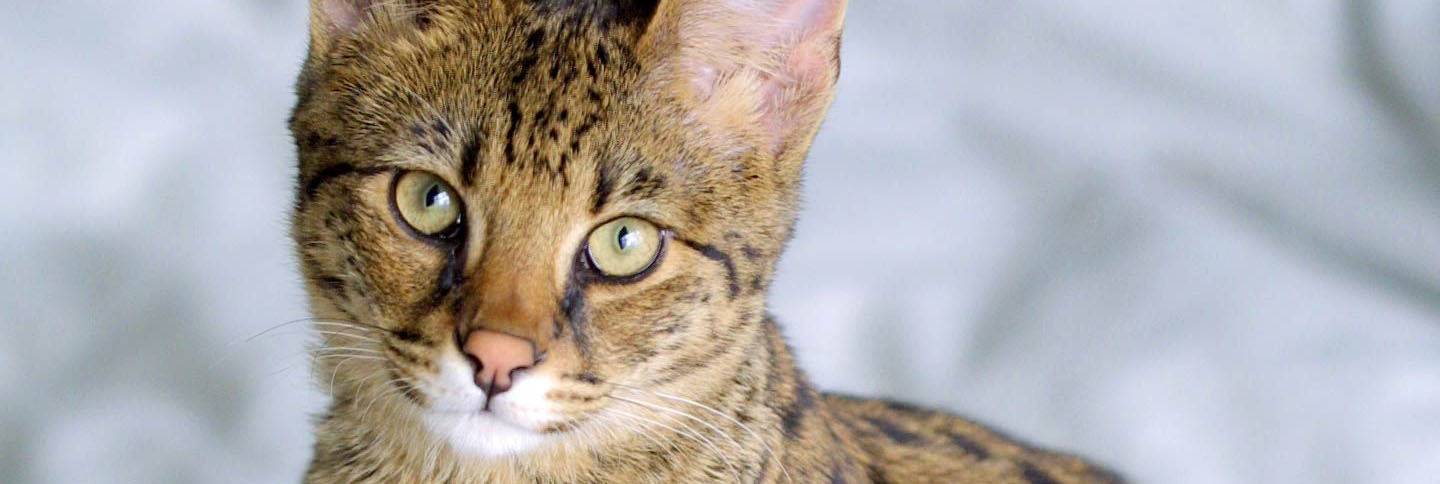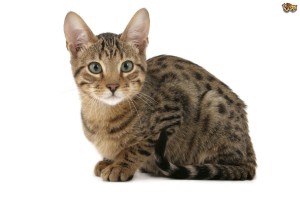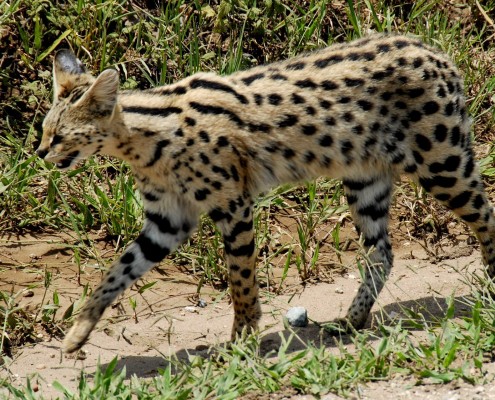Serengeti Cat

Meoww!!
The Serengeti cat which is a cross between the Bengal and the Oriental Shorthair, is a medium size cat with a long lithe body yet very muscular and strong.
In 5 Words
- Friendly
- Active
- Vocal
- Open
- Self-assured
Snapshot
Size: Medium
Origin: USA
Breed Development: 1995
Weight: 12 pounds
Life Span: 10 years.
Colour: Black, Silver, Tabby, and pattern is Spotted.

Characteristics
Learn About the Serengeti cat
The Serengeti cat was created by Karen Sausman, owner of Kingsmark Cattery in California and a professional conservation biologist. She decided to create a domestic breed of cat that was partially modeled on the beautiful African serval. However, unlike the breed known as Savannah cats, the Serengeti cats have no serval blood and have been developed from crossing bengals and oriental shorthairs. A project to create the breed started slowly in 1995 and now Serengeti’s are being bred by individuals around the United States, the United Kingdom, Europe, Australia and even Russia. The breed has been accepted in the Preliminary New Breed Status of TICA (The International Cat Association) and is expected to reach Championship Status in 2012.
The Serengeti cat which is a cross between the Bengal and the Oriental Shorthair, is a medium size cat with a long lithe body yet very muscular and strong. The Serengeti has strikingly large, round tipped ears equal to length of the head. Placed directly on the top of the skull, they are one of the breed’s main features. The other distinctive features are the bright round eyes (usually gold or amber, sometimes green) and long graceful legs. The neck is relatively long and thick, and does not taper (keeps the same width throughout its length).
The medium-short tail is thick, with a slight taper from the base to the tip. The tail should not extend beyond the shoulder when laid across the body. The head is an modified wedge being longer than wide. The chin is strong. The cheeks should not be prominent. Overall, the Serengeti resembles the Oriental Shorthair but with heavier boning, longer legs, larger ears, and much more upright posture.
Male Serengeti cats weigh 10 to 15 pounds, females are smaller and weigh 8 to 12 pounds.
The Serengeti has an open, friendly, and self-assured temperament. They are active and can be vocal, but less than their oriental ancestors. Ready to play for hours, they love to climb and chase toys. In a new location, they can be shy for some time, but it doesn’t take them long to adapt and quickly become an always-ready-to-help companion that follows you everywhere. They love to get on high places and enjoy running through the house at full speed. Properly introduced, they get along well with other pets. Although they are fairly vocal and love to chat with their owners, their voices are not quite as loud or strident as their Oriental forebears. They are usually happy to adapt to being indoor cats, as they tend to connect with people rather than the environment, although as they are such a large active breed, they need a reasonable amount of space to move around in.
The Serengeti is generally a very healthy breed of cat with no breed-specific health problems detected so far, and should live well into their mid teens. Kittens should always be purchased from a reputable breeder, and in common with other cats, they need annual vaccination boosters against the common feline ailments of flu and enteritis, as well as against Feline Leukaemia if they go outdoors.
When you take your cat to the vet, be sure to bring along a fresh stool sample so the vet can do a fecal exam to check for worms such as tapeworm, round Worm, whip worms and hook worms. The vet can also check for fleas and other external parasites such as lice ticks and ear mites. Decisions about vaccinations can be made at this time. Maintaining a regular schedule of required vaccinations is essential to good feline health. With a balanced diet and regular health care, the Serengeti will live a long and happy life.
This is a low maintenance cat breed which means that you only need to brush its coat once a week. Visit the chapter on cat hair care for great tips and advice for grooming shorthaired cats and cat dental care for advice on cleaning your cat’s teeth.






